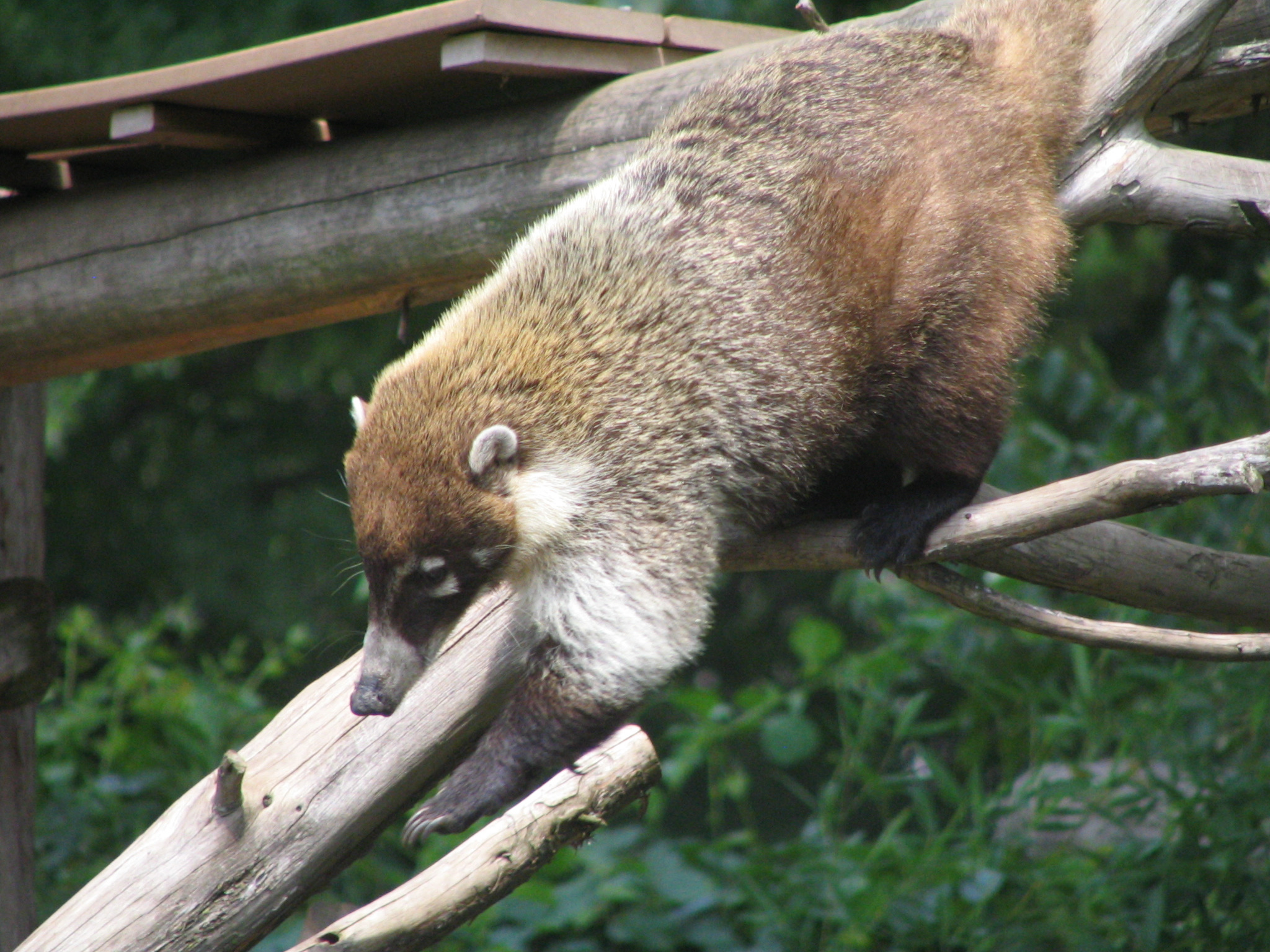- White-nosed Coati
Taxobox
name = White-nosed Coati
status = LR/lc | status_system = IUCN2.3

image_width = 299px
regnum =Animal ia
phylum = Chordata
classis =Mammal ia
ordo =Carnivora
familia =Procyonidae
genus = "Nasua "
species = "N. narica"
binomial = "Nasua narica"
binomial_authority = (Linnaeus,1766 )The White-nosed Coati ("Nasua narica"), also known as the Pizote or Antoon, is a member of theProcyonidae (raccoon family). It has a long shovel-shaped snout that extends beyond its lower jaw, and a 20-to-25-inch (51-64 cm) long erect tail with six or seven light bands on it. It has crushing molars and large canine teeth.In Mexico, it is often referred to as "tejón", which otherwise means
badger .White-nosed Coatis inhabit wooded areas (dry forests,
rain forest s,cloud forest s) of the Americas. They are found at any altitude from sea level to 3500 meters (11,500 feet), and from as far north as southeasternArizona andNew Mexico to as far south asPanama .White-nosed Coatis are generally dark brown, reddish, or yellow. Their eyes are masked while their muzzles, chins, and throats are light gray. Their bodies range around 110 to 120 centimeters (43 to 47 inches) long, of which 50 to 65 centimeters (20-26 inches) is tail. They normally weigh between five and nine
kilogram s (11-20 pounds). The Coati's tail is notprehensile .They are
omnivore s, preferring small vertebrates, fruits, carrion, insects, and eggs. They can climb trees easily, where the tail is used for balance, but they are most often on the ground foraging. Their predators include boas, raptors, hunting cats, andtayra s (tolomucos). They readily adapt to human presence; like raccoons, they will raid campsites and trash receptacles. They can be domesticated easily, and have been verified experimentally to be quite intelligent.They are primarily diurnal, retiring during the night to a specific tree and descending at dawn to begin their daily search for food. However, their habits are adjustable, and in areas where they are hunted by humans for food, or where they raid human settlements for their own food, they become more
nocturnal . Adult males are solitary, but females and sexually immature males form social groups. They use many vocal signals to communicate with one another, and also spend time grooming themselves and each other with their teeth and claws. Duringforaging times, the youngcubs are left with a pair of babysitters, similar tomeerkats . The young males and even some females tend toplay-fight . Many of theCoatis will have shortfights over food.References
*
Gallery
Wikimedia Foundation. 2010.
